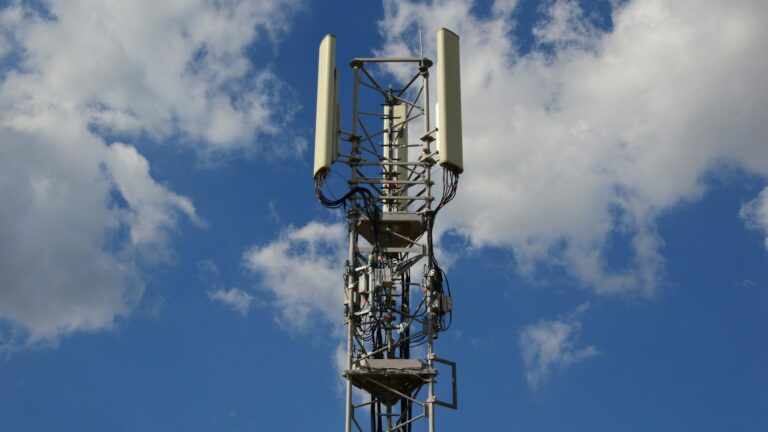The 5G antenna is the beating heart of our hyper-connected world. Whether you’re streaming 8K videos, gaming without lag, or running a smart home ecosystem, your 5G connection lives and dies by one crucial component — the antenna.
But here’s the twist: not all 5G antennas are created equal. Some users wonder why their speeds are sluggish while others are flying through the digital fast lane. The secret? Understanding how a 5G antenna works and choosing the right one for your setup.
What Is a 5G Antenna and Why It Matters
The 5G antenna isn’t just another gadget—it’s the bridge that connects you to lightning-fast wireless internet. From your 5G cellular antenna to your external 5G antenna at home, these devices convert invisible radio waves into blazing internet signals.
The Science Behind the Signal
A 5G antenna operates on millimeter waves, which are faster but travel shorter distances than traditional 4G frequencies. That’s why telecom giants like T-Mobile install thousands of T-Mobile 5G antennas on towers and rooftops to ensure wide coverage.
The higher the frequency, the greater the speed—but also the more critical the antenna design. Enter MIMO antenna 5G technology, or Multiple Input Multiple Output, which allows your device to connect through multiple streams for better stability and throughput.
The Rise of MIMO and 4x4 MIMO Antenna 5G
Modern connectivity thrives on MIMO technology. It’s what lets you stream, game, and video call seamlessly.
How MIMO Works to Supercharge 5G Antennas
A 4×4 MIMO antenna 5G system uses four transmitting and four receiving antennas simultaneously, maximizing data flow. It’s like adding more lanes to your digital highway — more lanes mean less traffic and more speed.
Smartphones, routers, and even 5G internet antennas rely on MIMO setups to provide users with stable connections, especially in dense urban areas where networks are jammed.
Choosing the Right 5G Antenna for Home Use
If you’re craving faster internet at home, investing in a 5G antenna for home is a game-changer.
External and Pole-Mounted Options
Installing a 5G antenna on pole or opting for a 5G antenna external mount can dramatically improve signal reception. For rural users, pairing your modem with an external 5G antenna ensures consistent speeds even when you’re miles away from the nearest cell tower.
Pro tip: Opt for a high gain cellular antenna if you live in areas with spotty coverage. It amplifies weak signals, giving you a stable 5G connection indoors.
5G Antenna Price and What to Expect
Let’s talk numbers. The 5G antenna price varies depending on power, range, and application.
For instance, a simple 5G antenna WiFi booster might cost under $50, while professional 5G internet antennas or antenna 5G units for businesses can run into hundreds of dollars. Remember—what you pay often reflects performance and reliability.
When shopping, look for compatibility with your carrier (especially if you’re using a T-Mobile 5G antenna) and check the supported frequency bands. The right pairing ensures you’re tapping into the fastest speeds available in your region.
5G Antennas and Smartphones The Hidden Connection
Most people don’t realize their smartphone already packs a sophisticated 5G antenna iPhone or Android equivalent inside.
The Smartphone Antenna Revolution
Apple, Samsung, and other brands have engineered internal 5G cell antennas so compact and efficient that they rival external setups. Still, pairing them with an external 5G antenna or 5G antenna WiFi extender can further enhance connectivity—perfect for gamers and professionals on the go.
The Power of High Gain Cellular Antennas
A high gain cellular antenna isn’t just about brute signal strength—it’s about direction.
Directional vs. Omnidirectional 5G Antennas
Directional 5G antennas focus signal power toward one direction, making them ideal for long-distance connections, while omnidirectional antennas spread coverage evenly around your space. Knowing which to use can mean the difference between frustration and flawless performance.
How Businesses Benefit from 5G Cellular Antennas
Companies leveraging 5G cellular antennas are redefining speed, efficiency, and innovation. Warehouses now rely on 5G internet antennas for automated robotics, while hospitals use MIMO antenna 5G systems for instant data access.
From logistics to telemedicine, the 5G antenna has become a cornerstone of the digital economy—powering smart cities, IoT, and next-gen mobility.
5G Antenna Installation Tips for Peak Performance
Setting up your 5G antenna properly is just as crucial as buying the right model.
Optimizing Placement and Angle
Mount your 5G antenna on a pole at least 15 feet above ground, with a clear line of sight to the nearest tower. Keep cables short and shielded to minimize signal loss. If using a 5G antenna for home, position it near a window facing your provider’s nearest cell antenna for optimal results.
And don’t forget to configure your router or modem to recognize the 5G antenna (or external 5G antenna) for seamless integration.
The Future of 5G Antenna Technology
As 5G matures, antenna innovation is accelerating. Researchers are developing 5G antennas that are smaller, smarter, and even self-optimizing.
Imagine a world where your 5G cellular antenna automatically tunes itself based on your location and bandwidth needs — that’s not science fiction anymore. It’s the next step in the evolution of 5G connectivity.
Conclusion: The Signal to the Future
The 5G antenna isn’t just a piece of hardware—it’s your gateway to a faster, smarter world. Whether it’s a 5G antenna for home, MIMO antenna 5G, or 5G internet antenna, choosing the right solution can transform how you live and work.
Connectivity is no longer optional—it’s essential. So take control of your digital life, invest in a quality 5G antenna, and experience the true meaning of next-level speed and reliability.
Because in the end, your connection defines your world—make sure it’s powered by the best 5G antenna technology available.


